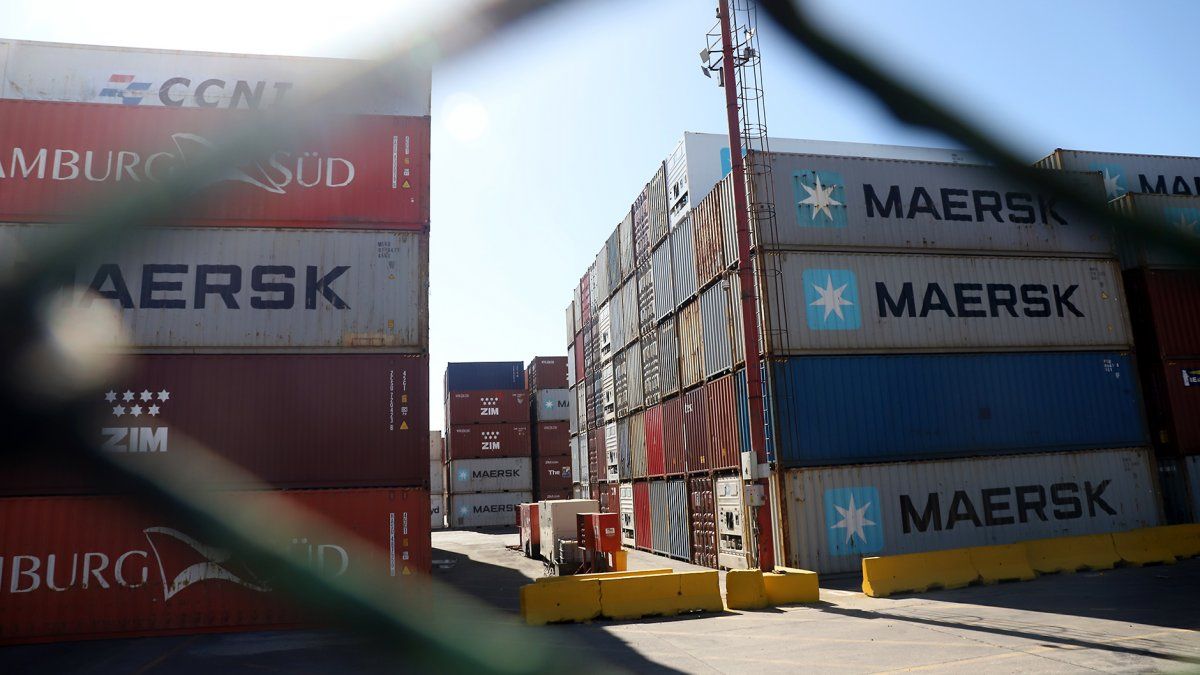If it is compared with the operations declared in Customs, which are those reported by the National Institute of Statistics and Censuses (Indec) in the forms of the Argentine Commercial Exchange (ICA), accrued imports total US$57,527 million in the year, that is, a difference of US$9,408 million. Last August, operations for US$7,837 million were authorized.
By the side of exports, until August the BCRA reported liquidations for US $ 59,108 million in the accumulated yu$s7,471 million in the month. For INDEC, the numbers were US$59,720 million and US$7,537 million respectively.
Thus, although for INDEC a monthly trade deficit of US$300 million was recorded, in the “box” there was a surplus of US$1,345 million.
The data indicates that up to now the controls on imports and on all possible routes of exit of dollars, They have been effective for the Government to contain the outflow of foreign currency and add reserves.
The data for August do not take into account the extraordinary liquidation carried out by the cereal companies, which thanks to the soybean dollar entered the country for US$8,123 million during the following month. So when the data for September will show a significant improvement in the cash surplus.
Meanwhile, the first 180-day “commercial credit” operations that the BCRA forced importing companies to take from their suppliers as of April begin to expire in October. The bulk of maturities this year will occur between November and December. Private analysts estimate that There will be some US$1.4 billion that will add pressure to reserves, along with the purchase of foreign currency from Argentines who are going to travel to Qatar to see the 2022 World Cup, which could take another US$2 billion.
A) Yes, Sergio Massa is expected to announce this Tuesday a new, more transparent scheme for the Comprehensive Import Monitoring System (SIMI)the mechanism used to classify tariff positions and defines if imports can be paid at the moment, at 60 or 180 days.
Companies can import for a value equivalent to 105% of what they operated last year and up to 170% of what was purchased in 2020. SMEs have a margin of 115%. Imports qualified as SIMI B can access the dollars only six months after the authorization, by the Secretary of Commerce, Matias Tombolini.
The new system that will be launched seeks to provide traceability to SIMI operations from the moment the importer begins the process. The economic authorities anticipate that when Tombolini authorizes a statement, the importer will receive a communication in which they will tell him the day he can go to the bank to buy the foreign currency.
The businessmen’s complaint for two months is that, despite having the authorized SIMI, the banks denied them the dollars, arguing that they exceeded the margin of 105%, 115% or 170%, as appropriate. The importers blamed the Central Bank for this, assuming that some foreign trade expenses that had nothing to do with the value of the merchandise were being included in the financial system.
Importers welcome the new traceability system with a fixed date to access the Single Free Exchange Market (MULC), but they distrust that from now on the AFIP will begin to strengthen controls by companies through the Coefficient of Financial Economic Capacity (CEF)something that it already did in February, with which it managed to paralyze imports for two weeks.
Source: Ambito
David William is a talented author who has made a name for himself in the world of writing. He is a professional author who writes on a wide range of topics, from general interest to opinion news. David is currently working as a writer at 24 hours worlds where he brings his unique perspective and in-depth research to his articles, making them both informative and engaging.




